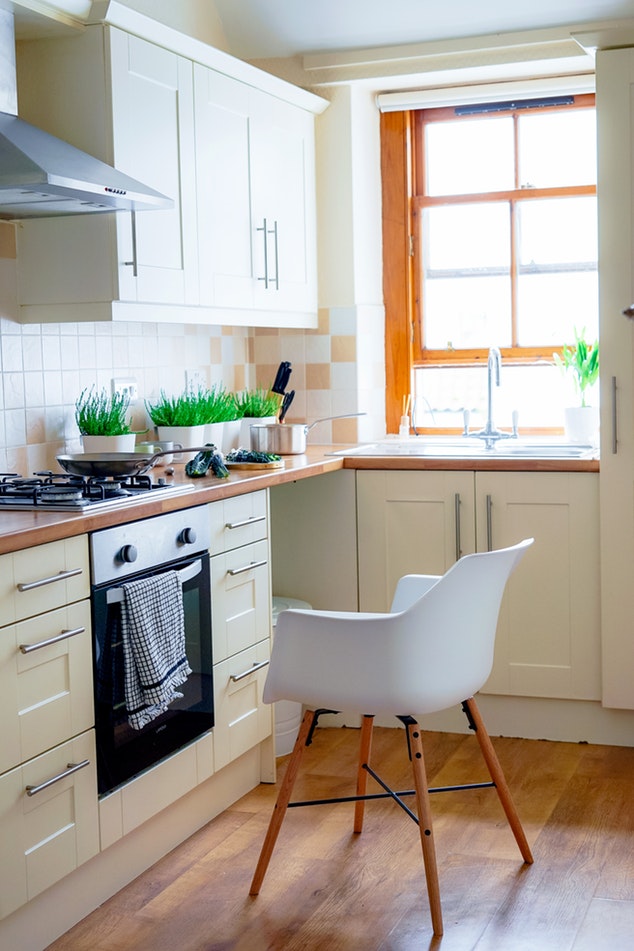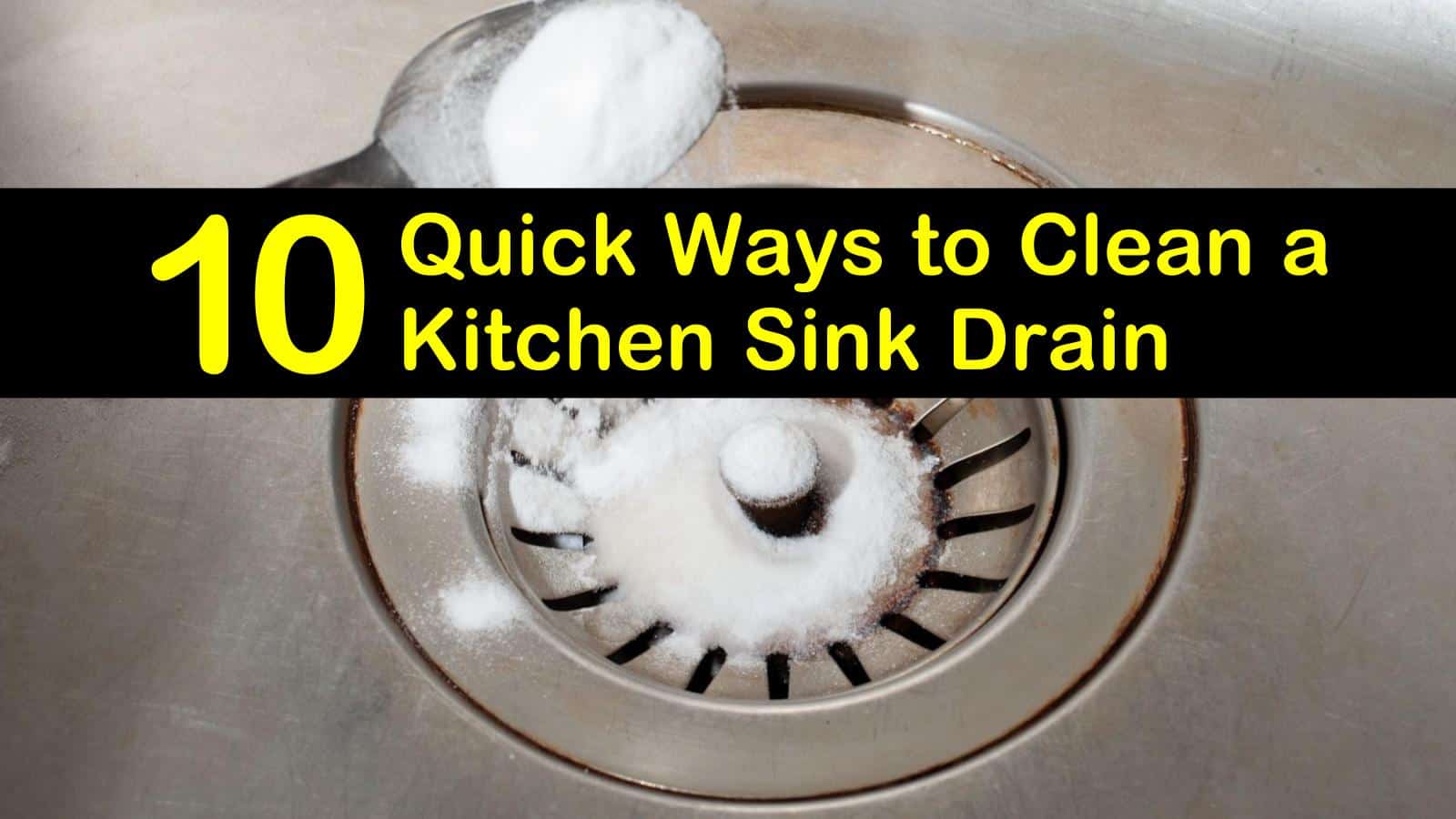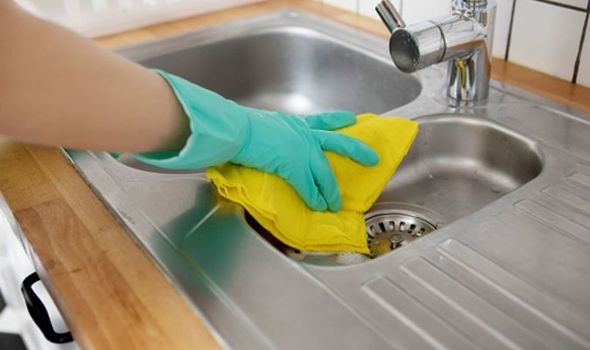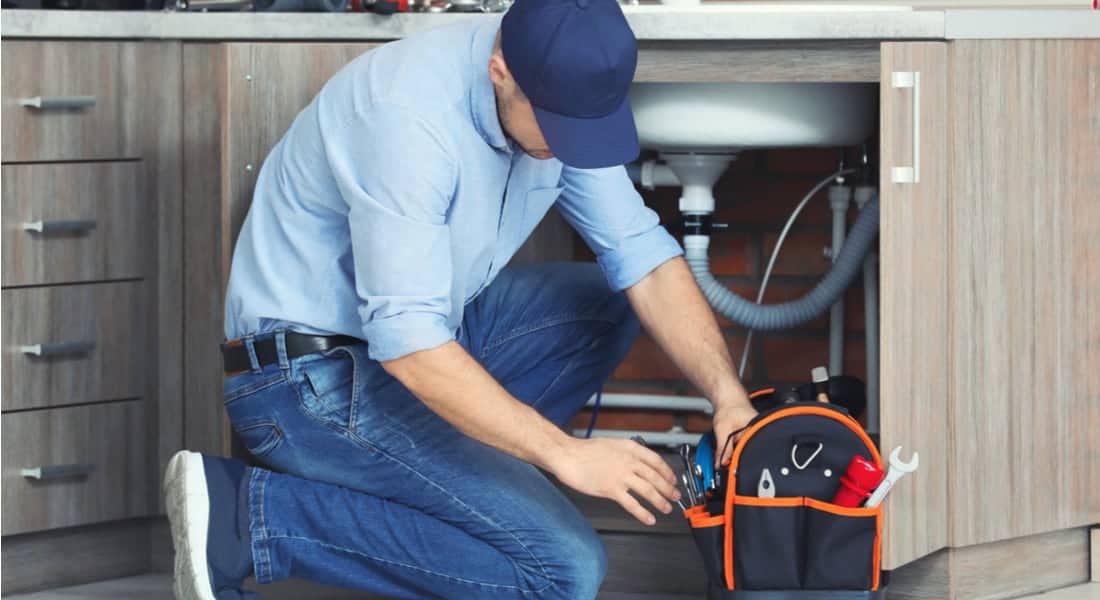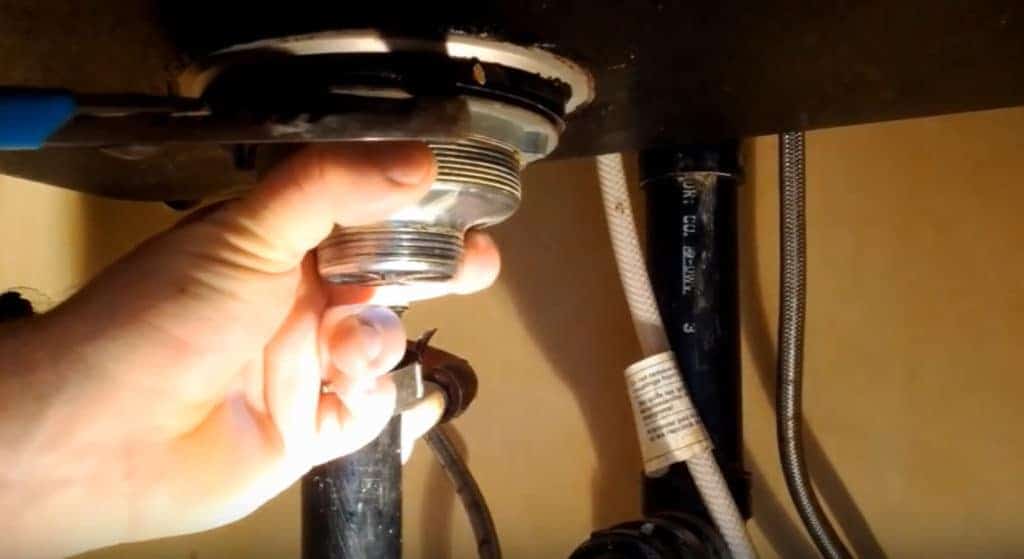Installing a kitchen sink drain may seem daunting, but with the right tools and steps, it can be a simple process. The first step is to gather all the necessary tools and materials, which include a new sink drain, plumber's putty, a wrench, and a screwdriver. Next, turn off the water supply to the sink and remove any old drain components. Apply a thin layer of plumber's putty to the underside of the drain flange and insert it into the sink's drain hole. Secure the flange in place by tightening the mounting screws. Then, attach the drain tailpiece to the bottom of the sink and connect it to the P-trap using a slip nut and washer. Use a wrench to tighten the connections and ensure they are leak-proof. Finally, turn the water supply back on and test the drain for any leaks. If everything is in working order, you can now enjoy your newly installed kitchen sink drain.How to Install a Kitchen Sink Drain
Over time, kitchen sink drains may become damaged or worn out, leading to leaks and other issues. It's important to replace a faulty drain to prevent further damage to your sink and plumbing. The process of replacing a kitchen sink drain is similar to installing one, with a few additional steps. Start by removing the old drain components, including the drain flange and tailpiece. Clean the area to remove any residue or debris. Apply plumber's putty to the new drain flange and insert it into the sink's drain hole. Secure it in place with the mounting screws. Next, connect the new tailpiece to the sink and P-trap, making sure to tighten all connections. Finally, turn the water supply back on and test for any leaks. If everything is working correctly, you have successfully replaced your kitchen sink drain.How to Replace a Kitchen Sink Drain
There are various types of kitchen sink drain configurations, each with its own unique features and benefits. The most common types include the standard strainer drain, disposal flange drain, and pop-up drain. The standard strainer drain is the most basic type and is found in most kitchen sinks. It consists of a strainer basket, which catches food debris, and a tailpiece that connects to the P-trap. The disposal flange drain is designed to work with garbage disposals and has a larger opening to accommodate the disposal unit. It also has a rubber gasket that creates a tight seal between the sink and disposal. Lastly, the pop-up drain has a stopper that can be raised or lowered using a lever. This type of drain allows you to fill the sink with water and also prevents food debris from entering the drain.Types of Kitchen Sink Drain Configurations
In addition to the three main types of kitchen sink drain configurations, there are also variations that combine features of different types. Some common configurations include the strainer basket and disposal flange combination, as well as the strainer basket and pop-up drain combination. The strainer basket and disposal flange combination allows for both a regular sink drain and a garbage disposal to be installed in the same sink. The strainer basket and pop-up drain combination provides the convenience of a pop-up stopper while also catching food debris.Common Kitchen Sink Drain Configurations
A clogged kitchen sink drain can be a frustrating and messy problem. However, with a few simple tools and techniques, you can unclog your drain and get your sink back to working order. The first step is to try using a plunger to loosen any blockages in the drain. If that doesn't work, you can try using a drain snake to remove any debris. Another effective method is to pour a mixture of baking soda and vinegar down the drain, followed by hot water. This will help break down and dissolve any clogs. If these methods don't work, you may need to use a chemical drain cleaner. However, be cautious when using these products as they can be harmful to your skin and the environment. If all else fails, it may be time to call a professional plumber.How to Unclog a Kitchen Sink Drain
Regularly cleaning your kitchen sink drain is essential to prevent clogs and keep your sink smelling fresh. One easy way to clean your drain is to pour hot water down it once a week. This helps to flush away any food debris and grease buildup. You can also use a mixture of baking soda and vinegar to clean your drain. Pour half a cup of baking soda down the drain, followed by a cup of vinegar. Let this sit for a few minutes before pouring hot water down the drain to rinse it out. If you notice any unpleasant odors coming from your drain, you can also use lemon peels or citrus-scented dish soap to freshen it up. Simply grind up the peels or pour some soap down the drain and run hot water for a few minutes.How to Clean a Kitchen Sink Drain
A leaky kitchen sink drain can not only be annoying but also cause damage to your sink and cabinets. The most common cause of a leak is a worn-out gasket or loose connections. To fix a leaky drain, you will need to identify the source of the leak. Check the gasket between the drain flange and the sink for any damage and replace it if necessary. You can also tighten any loose connections using a wrench. If the leak persists, it may be due to a cracked drain or P-trap, in which case you will need to replace these components. If you are unsure how to do this, it's best to call a professional plumber to avoid causing further damage.How to Fix a Leaky Kitchen Sink Drain
Sometimes, the drain on your kitchen sink may not be aligned correctly, causing water to pool in the sink. Adjusting the drain can help solve this issue and improve the overall functionality of your sink. Start by loosening the slip nut and adjusting the pipe connecting the drain to the P-trap. You can also adjust the drain flange by loosening the mounting screws and moving it up or down. After making the necessary adjustments, tighten all connections and test the sink for any leaks.How to Adjust a Kitchen Sink Drain
If you need to replace your kitchen sink or perform other plumbing work, you will need to know how to remove the sink drain. The process is similar to replacing a drain, but in reverse. Start by disconnecting the drain from the sink and P-trap. Then, remove the mounting screws and pull out the drain flange. You may need to use a wrench to loosen any stubborn connections. Once the drain is removed, clean the area and proceed with your plumbing work.How to Remove a Kitchen Sink Drain
If you have decided to add a garbage disposal to your kitchen sink, you will need to know how to install it alongside the sink drain. The good news is that most garbage disposals come with detailed instructions and are relatively easy to install. The first step is to remove the old drain components and install the mounting flange for the disposal. Then, connect the disposal to the mounting flange and secure it in place. Finally, connect the disposal's discharge pipe to the P-trap and test for any leaks. In conclusion, knowing how to install, replace, and maintain your kitchen sink drain is essential for the proper functioning of your sink. With the tips and techniques outlined in this article, you can confidently tackle any issues with your kitchen sink drain and keep it in top condition.How to Install a Garbage Disposal with a Kitchen Sink Drain
The Importance of Proper Kitchen Sink Drain Configuration in House Design

Maximizing Space and Functionality
 When it comes to designing a functional and efficient kitchen, one of the most important aspects to consider is the
kitchen sink drain configuration
. This may seem like a small detail, but it can greatly affect the overall layout and functionality of your kitchen. A well-planned and properly installed drain configuration can help maximize space and make your kitchen more functional.
One of the main benefits of a proper kitchen sink drain configuration is that it can help
maximize space
in your kitchen. By strategically placing the sink and its drain, you can create more countertop space for food preparation and other tasks. This is especially important in smaller kitchens where every inch of space counts. You can also opt for a
corner sink
with a unique drain configuration to make the most out of tight corners and create more usable space.
When it comes to designing a functional and efficient kitchen, one of the most important aspects to consider is the
kitchen sink drain configuration
. This may seem like a small detail, but it can greatly affect the overall layout and functionality of your kitchen. A well-planned and properly installed drain configuration can help maximize space and make your kitchen more functional.
One of the main benefits of a proper kitchen sink drain configuration is that it can help
maximize space
in your kitchen. By strategically placing the sink and its drain, you can create more countertop space for food preparation and other tasks. This is especially important in smaller kitchens where every inch of space counts. You can also opt for a
corner sink
with a unique drain configuration to make the most out of tight corners and create more usable space.
Efficient Water Flow and Drainage
:max_bytes(150000):strip_icc()/how-to-install-a-sink-drain-2718789-hero-24e898006ed94c9593a2a268b57989a3.jpg) Another important aspect of a proper kitchen sink drain configuration is
efficient water flow and drainage
. When the drain is not placed correctly, water can accumulate in certain areas and cause problems such as clogging and standing water. This can lead to unpleasant odors and potential health hazards. A well-designed drain configuration ensures that water flows smoothly from the sink to the drain, preventing any potential issues.
Moreover, a good drain configuration can also help with
efficient drainage
. This means that water will be drained quickly and efficiently, reducing the risk of leaks and water damage. This is particularly important in areas with heavy rainfall or frequent use of the sink. A properly installed drain system can also help prevent water from seeping into other areas of the kitchen, ensuring a dry and clean environment.
Another important aspect of a proper kitchen sink drain configuration is
efficient water flow and drainage
. When the drain is not placed correctly, water can accumulate in certain areas and cause problems such as clogging and standing water. This can lead to unpleasant odors and potential health hazards. A well-designed drain configuration ensures that water flows smoothly from the sink to the drain, preventing any potential issues.
Moreover, a good drain configuration can also help with
efficient drainage
. This means that water will be drained quickly and efficiently, reducing the risk of leaks and water damage. This is particularly important in areas with heavy rainfall or frequent use of the sink. A properly installed drain system can also help prevent water from seeping into other areas of the kitchen, ensuring a dry and clean environment.




/how-to-install-a-sink-drain-2718789-hero-b5b99f72b5a24bb2ae8364e60539cece.jpg)















/how-to-install-a-sink-drain-2718789-hero-24e898006ed94c9593a2a268b57989a3.jpg)
:max_bytes(150000):strip_icc()/DrainboardKitchenSink-5a762bbceb97de0037ef6fec.jpg)
:max_bytes(150000):strip_icc()/how-to-clean-a-kitchen-sink-and-drain-02-5660035-7a630bc36f2c401bbe412bbe85937ff3.jpg)


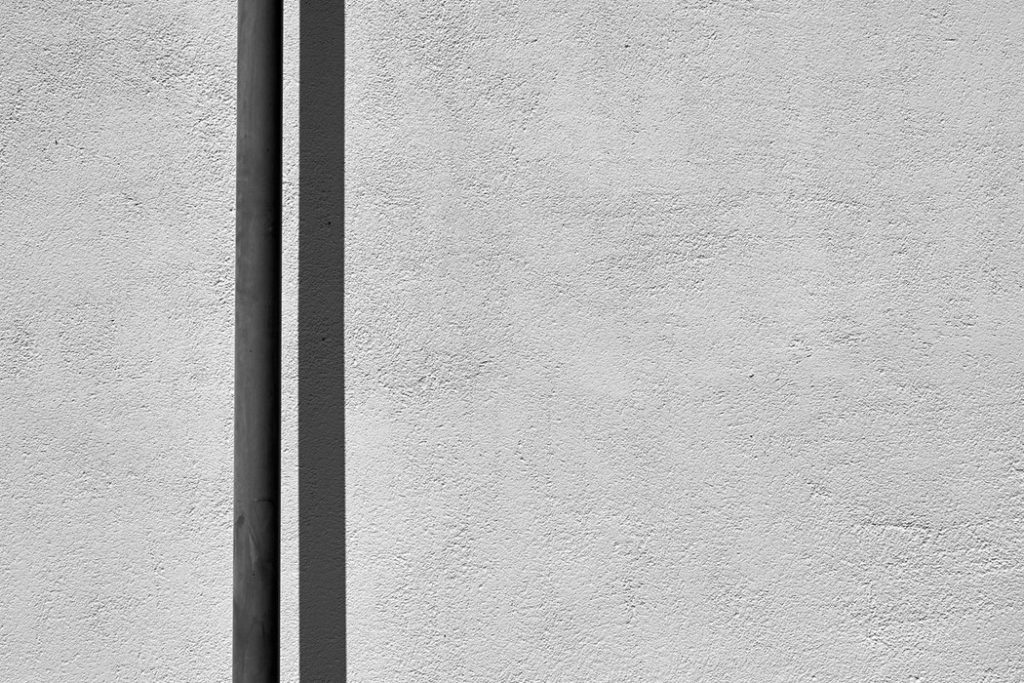









:max_bytes(150000):strip_icc()/freshen-and-unclog-drain-with-baking-soda-1900466-22-bbf940b70afa4d5abef0c54da23b1d3f.jpg)






